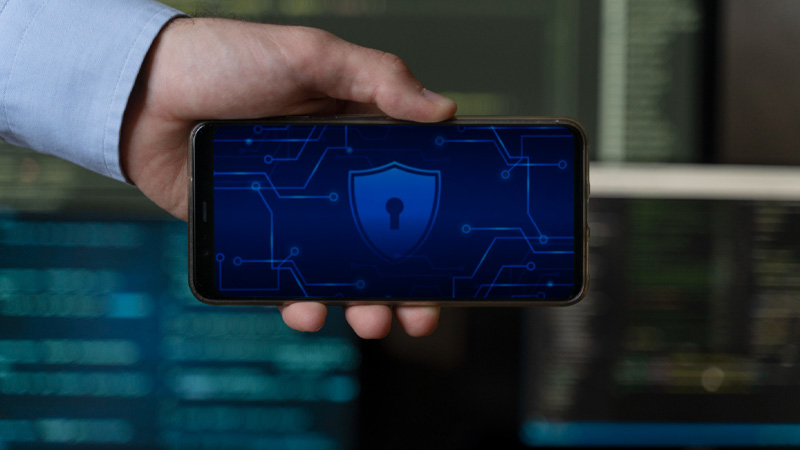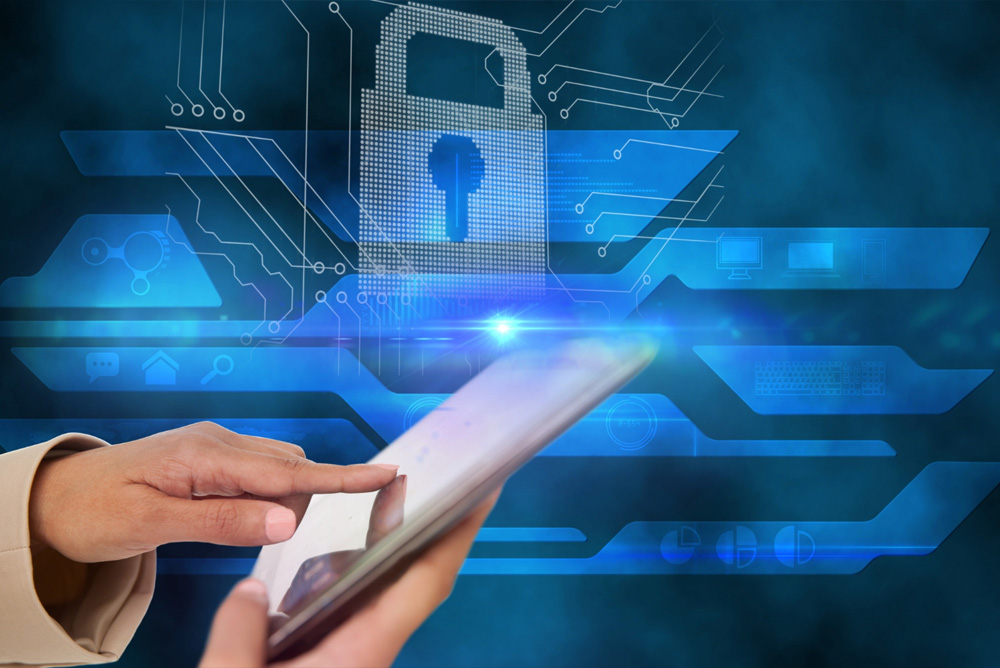What is Data Privacy?
Data privacy generally means the ability of a person to determine for themselves when, how, and to what extent personal information about them is shared with or communicated to others. This personal information can be one's name, location, contact information, or online or real-world behavior. Just as someone may wish to exclude people from a private conversation, many online users want to control or prevent certain types of personal data collection.
As Internet usage has increased over the years, so has the importance of data privacy. Websites, applications, and social media platforms often need to collect and store personal data about users in order to provide services. However, some applications and platforms may exceed users' expectations for data collection and usage, leaving users with less privacy than they realized. Other apps and platforms may not place adequate safeguards around the data they collect, which can result in a data breach that compromises user privacy.
Why is Data Privacy important?
In many jurisdictions, privacy is considered a fundamental human right, and data protection laws exist to guard that right. Data privacy is also important because in order for individuals to be willing to engage online, they have to trust that their personal data will be handled with care. Organizations use data protection practices to demonstrate to their customers and users that they can be trusted with their personal data.
Personal data can be misused in a number of ways if it is not kept private or if people don’t have the ability to control how their information is used:
- Criminals can use personal data to defraud or harass users.
- Entities may sell personal data to advertisers or other outside parties without user consent, which can result in users receiving unwanted marketing or advertising.
- When a person's activities are tracked and monitored, this may restrict their ability to express themselves freely, especially under repressive governments.
For individuals, any of these outcomes can be harmful. For a business, these outcomes can irreparably harm their reputation, as well as resulting in fines, sanctions, and other legal consequences.
In addition to the real-world implications of privacy infringements, many people and countries hold that privacy has intrinsic value: that privacy is a human right fundamental to a free society, like the right to free speech.
What are the laws that govern data privacy?
As technological advances have improved data collection and surveillance capabilities, governments around the world have started passing laws regulating what kind of data can be collected about users, how that data can be used, and how data should be stored and protected. Some of the most important regulatory privacy frameworks to know include:
- THE DIGITAL PERSONAL DATA PROTECTION ACT, 2023: An Act introduced by the Indian government to provide for the processing of digital personal data in a manner that recognises both the right of individuals to protect their personal data and the need to process such personal data for lawful purposes and for matters connected therewith or incidental thereto.
- General Data Protection Regulation (GDPR): Regulates how the personal data of European Union (EU) data subjects, meaning individuals, can be collected, stored, and processed, and gives data subjects rights to control their personal data (including a right to be forgotten).
- National data protection laws: Many countries, such as Canada, Japan, Australia, Singapore, and others, have comprehensive data protection laws in some form. Some, like Brazil's General Law for the Protection of Personal Data and the UK's Data Protection Act, are quite similar to the GDPR.
There are also industry-specific privacy guidelines in some countries: for instance, in the United States, the Health Insurance Portability and Accountability Act (HIPAA) governs how personal healthcare data should be handled.
However, many privacy advocates argue that individuals still do not have sufficient control over what happens to their personal data. Governments around the world may pass additional data privacy laws in the future.

Key principles of the DPDPA
The DPDPA is based on six key principles:
- Lawfulness: Personal data must be processed lawfully, fairly, and transparently.
- Purpose Limitation: Personal data must be collected for specified, explicit, and legitimate purposes and not further processed in a manner that is incompatible with those purposes.
- Data Minimization: Personal data must be adequate, relevant, and limited to what is necessary in relation to the purposes for which they are processed.
- Accuracy: Personal data must be accurate and, where necessary, kept up to date.
- Storage Limitation: Personal data must be kept in a form which permits identification of data subjects for no longer than is necessary for the purposes for which the personal data are processed.
- Integrity and Confidentiality: Personal data must be processed in a manner that ensures appropriate security of the personal data, including protection against unauthorized or unlawful processing and against accidental loss, destruction, or damage, using appropriate technical or organizational measures.
What are some of the challenges users face when protecting their online privacy?
- Online tracking: User behavior is regularly tracked online. Cookies often record a user's activities, and while most countries require websites to alert users of cookie usage, users may not be aware of to what degree cookies are recording their activities.
- Losing control of data: With so many online services in common use, individuals may not be aware of how their data is being shared beyond the websites with which they interact online, and they may not have a say over what happens to their data.
- Lack of transparency: To use web applications, users often have to provide personal data like their name, email, phone number, or location; meanwhile, the privacy policies associated with those applications may be dense and difficult to understand.
- Social media: It is easier than ever to find someone online using social media platforms, and social media posts may reveal more personal information than users realize. In addition, social media platforms often collect more data than users are aware of.
- Cyber crime: Many attackers try to steal user data in order to commit fraud, compromise secure systems, or sell it on underground markets to parties who will use the data for malicious purposes. Some attackers use phishing attacks to try to trick users into revealing personal information; others attempt to compromise companies' internal systems that contain personal data.
What are some of the challenges businesses face when protecting user privacy?
- Communication: Organizations sometimes struggle to communicate clearly to their users what personal data they are collecting and how they use it.
- Cyber crime: Attackers target both individual users and organizations that collect and store data about those users. In addition, as more aspects of a business become Internet-connected, the attack surface increases
- Data breaches: A data breach can lead to a massive violation of user privacy if personal details are leaked, and attackers continue to refine the techniques they use to cause these breaches.
- Insider threats: Internal employees or contractors might inappropriately access data if it is not adequately protected.
Our Approach:
We work with vendors who ensure that data protection is built into the system from the ground up and embedded in the design process.
Using Threat Modelling for Data privacy andtechnologies that enhance Privacy, they allow for the translation of abstract privacy principles into auditable, repeatable actions that can be methodically applied to data. This ensures that privacy measures are consistently implemented and are not merely theoretical.
These vendors offer automatic, mathematical methods to secure data through technologies such as differential privacy, expert determination anonymization, federated learning, secure multi-party compute etc.
Process
- Data Privacy Threat Modelling based risk assessment: Utilizing advanced privacy attack simulation techniques to analyse risk in data flows, system architectures, and potential attack vectors.
- Privacy enhancement techniques -based Mitigatory Recommendations: Implementing appropriate enhancement technologies depending upon the type of data or insight flow requirement to mitigate identified risks.
- Integration with business ecosystem: Integrate threat modelling tools with data sources and data flows, connect DPIA process with privacy threat modellimng to make it augmented DPIA, integrate the results into data pipelines to make it DevPrivacyOps, configuring enhancement technologies in collaboration with business teams, verifying effectiveness, sharing output for teams to follow.
Privacy Controls:
- Cryptographic Protection: Ensures confidentiality and integrity of sensitive data through encryption techniques.
- Anonymous Data Transformation: Anonymizes personally identifiable information (PII) in datasets to preserve privacy while maintaining data utility.
- Access Governance: Regulates access to sensitive information based on user roles and permissions, ensuring data privacy and compliance.
- Tokenization Solutions: Replaces sensitive data elements with unique tokens to minimize the risk of data exposure and unauthorized access.
- Masking Techniques: Conceals sensitive information in datasets, protecting privacy during data processing, testing, and sharing.
- Data Obfuscation Methods: Obscures sensitive data elements to maintain data integrity while safeguarding privacy.
- Homomorphic Encryption Solutions: Enables secure computation on encrypted data, ensuring privacy-preserving data processing.
- Differential Privacy Measures: Adds statistical noise to query responses to preserve individual privacy during data analysis.
- De-identification Strategies: Removes direct and indirect identifiers from datasets to prevent re-identification and protect individual privacy.
- AI-powered tool that performs dynamic assessments of privacy risks, visualizing potential threats and helping organizations mitigate risks proactively.
- Data analysis tool that scans and summarizes Personally Identifiable Information (PII) in unstructured data within a database. It helps organizations improve data security and compliance by providing insights into PII distribution across various file types.
- Mapping, analysis, and documentation of DPIA activities by augmenting with Privacy threat modeling , ensuring GDPR compliance and promoting informed privacy decision-making.
- Advanced data anonymization including expert grade statistical anonymization with mathematical proof that ensures sensitive data can be used for analytics without compromising individual privacy
- State-of-the-art encryption and decryption capabilities, securing data at the most granular level with customizable key generation strategies, cryptographic data sharing, API based purpose centric de-identification and data minimisation for cross border transfers
- Employs advanced differential privacy techniques to protect individual data points during analysis, ensuring data confidentiality in analytics.
- Generates synthetic data that mirrors real-world datasets but contains no real personal information, allowing for safe use in testing and development environments
- Privacy Risk and Generation AI Governance specially tailored for Large Language Models (LLMs). Organizations can safeguard their data, navigate complex risks, and ensure responsible AI practices with ease, integrating user safety, AI model security and LLM governance as per various emerging AI regulatory requirements




